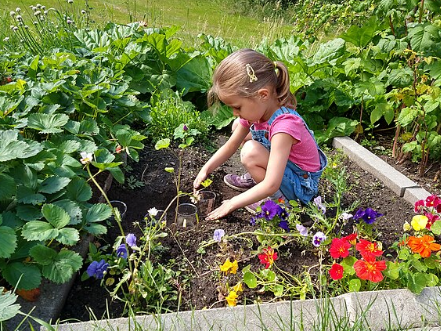
What if a Prescription for Better Health Was Just a Trowel Away?
No white coats. No pill bottles. Just soil under your fingernails, sunlight on your back, and the slow, satisfying rhythm of pulling weeds or planting seeds. For thousands of people living with chronic conditions, that might be exactly what the doctor should order.
A sweeping new review of 23 studies, involving over 4,500 participants from around the world, has taken a serious look at gardening as a health intervention. The results? Gardening helps—but the story isn’t as simple as a seed-to-salvation fairytale. The strongest effects were found in mental health, with smaller and less certain improvements in physical and general health. Still, for people managing conditions like diabetes, depression, and dementia, this research adds scientific weight to something many have long suspected: getting your hands dirty can help you feel better.
Let’s dig deeper.
From Flower Beds to Health Benefits
Researchers reviewed studies that focused on adults living with long-term conditions—like high blood pressure, chronic pain, obesity, and cognitive decline. These weren’t casual hobbyists. Participants took part in structured gardening programs or horticultural therapy sessions, often led by professionals and designed to promote well-being.
The researchers grouped the results into three categories:
- Mental health (e.g., anxiety, stress, mood)
- Physical health (e.g., blood pressure, cognitive function)
- General health (e.g., sleep quality, social connection)
While the studies varied in design, geography, and quality, the overall takeaway was clear: gardening has a moderate positive effect on mental health, with smaller and less conclusive impacts on physical and general health. Notably, when low-quality studies were excluded, the mental health benefits became even more significant.
Why Mental Health Blossoms in the Garden
Why is gardening especially helpful for mental well-being? It might be the unique combination of elements it brings together:
- Nature exposure: Being in green spaces is linked to lower stress and improved mood.
- Physical activity: Even gentle movement helps the brain and body.
- Purpose and routine: Tending to a garden brings structure and a sense of accomplishment.
- Social connection: Many gardening programs are group-based, fostering friendships.
One study included in the review focused on older adults with early-stage dementia. After several weeks of structured gardening sessions, participants reported feeling calmer, more alert, and more connected to others. A caregiver described it this way: “When they’re with the plants, they come alive. It’s like turning the lights back on.”
That emotional nourishment is powerful—especially for those living with chronic stress, isolation, or cognitive decline.
Practical Implications for Public Health
If you’re a clinician, public health worker, or policymaker, the message here is clear: gardening is more than a hobby. It’s a promising, low-cost tool for promoting mental wellness, especially in aging populations and those with chronic conditions.
Some takeaways:
- Community programs: Creating or funding garden-based programs in community centers, senior homes, or clinics could support mental health.
- Social prescriptions: Some countries, like the UK, already allow doctors to “prescribe” gardening or green space time. This review gives that practice more evidence.
- Health equity: Gardening programs could be tailored to meet the needs of underserved populations who may have limited access to nature or wellness resources.
Still, we must tread carefully. Not all gardens are created equal, and not all people benefit in the same way. The review authors stress the need for more high-quality studies that compare different types of gardening programs, identify who benefits most, and explore how long interventions should last.
What’s Next?
This review is a solid first step—but it’s far from the final word. Here are some of the biggest questions researchers still need to answer:
- Which gardening activities matter most? Is it digging, planting, or just being in the garden?
- How long does the benefit last? Do people keep improving after the program ends?
- Who benefits most? Are the mental health benefits stronger for people with anxiety vs. those with cognitive decline?
Also, most of the current studies were small, and many had weaknesses in design or reporting. To make gardening a standard part of public health recommendations, we need rigorous, diverse studies that reflect real-world conditions and communities.
Join the Conversation
Have you seen gardening used in a healthcare or community setting? Do you believe nature-based therapy should play a bigger role in chronic disease management?
- What’s stopping more communities from using gardening as a health intervention?
- How could gardening programs be adapted for different populations—like kids, caregivers, or people in urban areas?
Act Now – Public Health Can’t Wait!
The future of public health is being shaped right now. Stay informed with weekly expert insights and take action where it matters most. Subscribe for free today!
📢 Time is critical! Share this blog now and rally others to join the movement.



